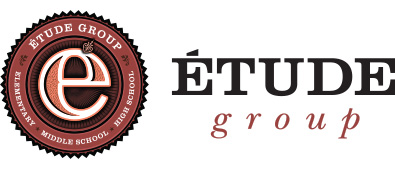Walking through the halls of ESAA, the transformation of classrooms is evident as teachers prepare for the new school year. Books are rearranged and bookcases dusted, learning spaces constructed and student nametags adhered to tables and lockers. The walls remain bare, awaiting student thinking. Making students’ thinking visible is at the very core of ESAA’s culture. Soon the walls in classrooms and halls will be filled with students’ mind-maps, thinking routines, post-it notes, and sketches.
During the first week of school, the walls, as well as the building, transforms with the energy and excitement of students, both returning and new. Teachers create time and space for students to reconnect with old, and make new friends. Students will be asked to think critically about what they need to be learners, and citizens, and reflect on what their hopes and dreams are for the school year. This thinking will be shared, documented, made visible, and implemented.
Students lead this process of creating a safe and inclusive participatory culture in multiple ways. Community is established in classroom meetings, by creating classroom and common space expectations, and a culture creative and innovative thinking.
Establishing Community through Classroom Meeting
Each day at ESAA starts out with a Classroom Meeting. This gathering transitions students from home to school. Movement activities within the classroom meeting helps students disengage stress in their bodies and prepares them for learning. Celebrations and concerns are shared in the classroom meeting, helping students make connections with each other and build community. Solutions to the classroom concerns are developed by the students providing opportunities for all students to take a participatory role in developing their classroom culture.
Establishing Expectations
In each classroom, students develop their own set of classroom expectations. Students discuss how to create culture where student thinking and risk taking is valued in learning. As citizens, students are asked to think about how their actions impact not only themselves, but also those around them. These discussions lead to a classroom set of expectations that are documented and made visible within the classroom. Common Area expectations (playground, hallways, bathrooms, and lunchroom) are also student created. In this process, representatives from each classroom meet with the Dean of School to discuss and vote upon on school-wide common area expectations. The Common Area Expectations are posted in classrooms and hallways. Expectations are shared with all ESAA staff.
ESAA expectations value each student and are used to work students when issues arise to focus on resolution and restoration instead of punishment. This process engages students as citizens of the community.
Establishing a Culture of Creative and Innovative Thinking
ESAA students visit the John Michael Kohler Arts Center during the first week of school to foster creative and innovative thinking. They spend time looking at art to deepen student learning and understanding about topics and concepts explored within projects, and to create a better understanding of the considerations artists make when creating. Attending JMKAC allows students to experience a community resource and further appreciation for artists as professionals, and the understanding of art. While students are at JMKAC, they will participate in a thinking routine that will encourage their thinking about the art as a community member. This thinking will be used to create a schoolwide project where students will create as individuals, as well as, part of a larger group.

